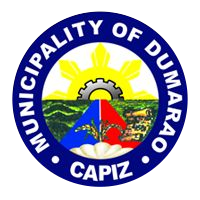Barangay Sagrada Familia
 The barangay Sagrada Familia was used to be called Barangay Agmalate from the word “La-te” means (Late-Late or Laka-laka) because the houses are few and the distance is far. According to the narrative of senior citizen who is a resident of the Barangay, the name of Barangay was changed because the priest who was killed, beheaded and washed away in the creek of Sitio Badbaran, Sagrada Familia. Before he died, he cursed Barangay Agmalate that if there is no priest from the said barangay to replace him, the barangay will become miserable and unlucky, so when Kapitan Del Bario came year 1967-1981 named Simplicio Pendon Sr. He together with the people of the Barangay tried to change the name of the Barangay Agmalate in the belief that the curse might disappear. He changed Agmalate into Sagrada Familia, it is named after a patron saint. Since the name of the Barangay was changed, it became quiet and peaceful. But the Elementary school Sagrada Familia is still named Agmalate Elementary School.
The barangay Sagrada Familia was used to be called Barangay Agmalate from the word “La-te” means (Late-Late or Laka-laka) because the houses are few and the distance is far. According to the narrative of senior citizen who is a resident of the Barangay, the name of Barangay was changed because the priest who was killed, beheaded and washed away in the creek of Sitio Badbaran, Sagrada Familia. Before he died, he cursed Barangay Agmalate that if there is no priest from the said barangay to replace him, the barangay will become miserable and unlucky, so when Kapitan Del Bario came year 1967-1981 named Simplicio Pendon Sr. He together with the people of the Barangay tried to change the name of the Barangay Agmalate in the belief that the curse might disappear. He changed Agmalate into Sagrada Familia, it is named after a patron saint. Since the name of the Barangay was changed, it became quiet and peaceful. But the Elementary school Sagrada Familia is still named Agmalate Elementary School.
Sagrada Familia is a rural barangay, and one of the upland barangays of the municipality of Dumarao, province of Capiz. It has a total land area of 14.8346 square kilometers.
The barangay has an agricultural area of 1,440.37 hectares, 97.10% of its total land area. Agricultural produce are palay, sugarcane, corn and calamansi. Part of their agricultural diversification activities are livestock and backyard native chicken farming.
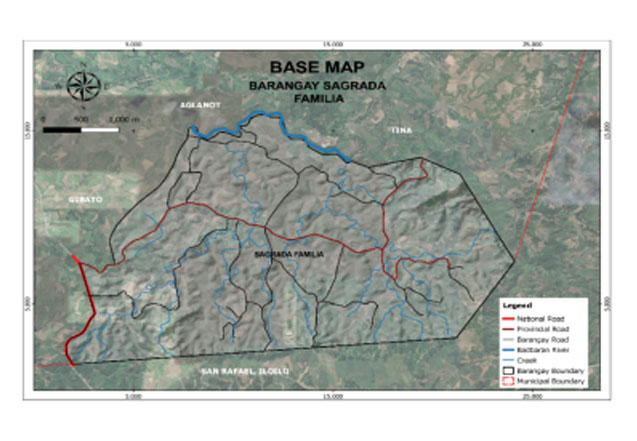
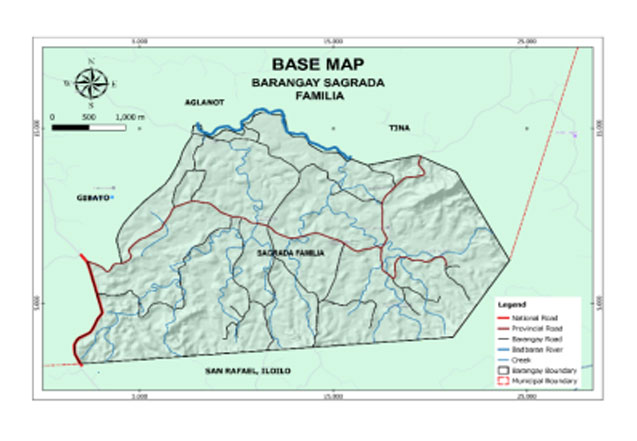
Geo- physical Hazards
Sagrada Familia is exposed to 2 types of hazards: rain-induced flooding with low susceptibility levels and rain-induced landslides with 2 susceptibility levels: moderate, and low.
Susceptible to low-level flooding is 122.865 hectares or 8% of the total barangay land area.
An area of 1,396.01 hectares or 94% of the total land area has a low susceptibility level for rain-induced landslide, while 87.44 hectares or 6% have moderate-level susceptibility.
An area of 87.44 hectares or 6% of the total land area has a moderate susceptibility level for rain-induced landslide, while 1,396.01 hectares or 94% have low-level susceptibility.
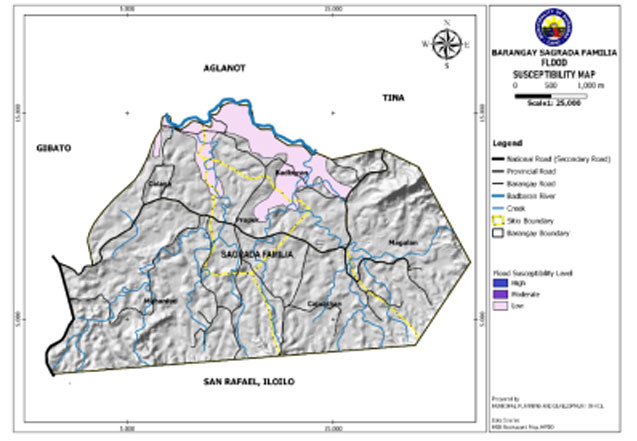
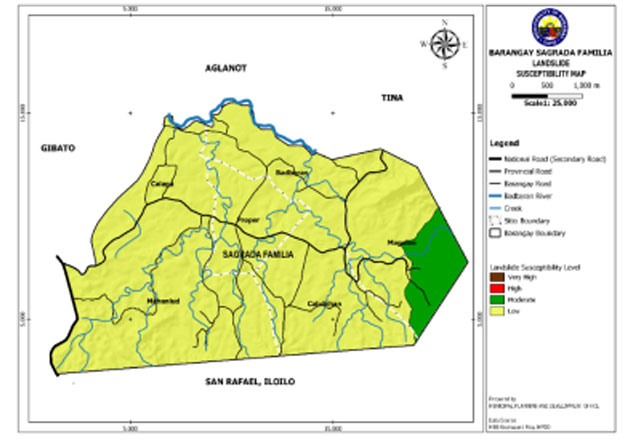
Demographics
Household
The household population of Sagrada Familia in the 2020 Census was 2,687 broken down into 655 households or an average of 4.10 members per household.
Population by age group
According to the 2020 Census, the age group with the highest population in Sagrada Familia is 5 to 9 with 313 individuals. Conversely, the age groups with the lowest population in the ranges 70 to 74 with 30 individuals.
Combining age groups together, those aged 14 and below, consisting of the young dependent population which include infants/babies, children and young adolescents/teenagers, make up an aggregate of 32.12% (863). Those aged 15 up to 64, roughly, the economically active population and actual or potential members of the work force, constitute a total of 62.19% (1,671). Finally, old dependent population consisting of the senior citizens, those aged 65 and over, total 5.69% (153) in all.
Historical population
The population of Sagrada Familia grew from 1,899 in 1990 to 2,687 in 2020, an increase of 788 people over the course of 30 years. The latest census figures in 2020 denote a positive growth rate of 4.47%, or an increase of 504 people, from the previous population of 2,183 in 2015.
Adjacent barangays
Sagrada Familia shares a common border with the following barangay(s):
- San Diego, Lemery, Iloilo
- Tina, Dumarao, Capiz
- Aglanot, Dumarao, Capiz
- Poblacion, San Rafael, Iloilo
- Calaigang, San Rafael, Iloilo
- Dalicanan, Passi, Iloilo
- Gemumua-agahon, Passi, Iloilo
- Gibato, Dumarao, Capiz
- San Andres, San Rafael, Iloilo
- Omio, Lemery, Iloilo
- San Antonio, Lemery, Iloilo

